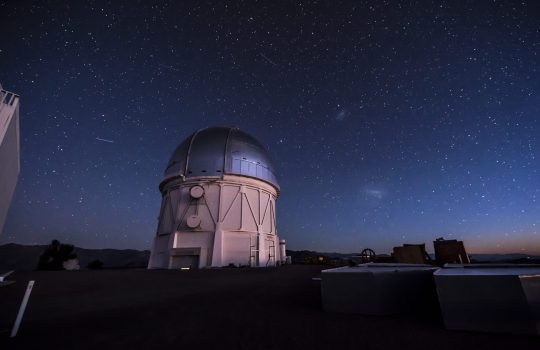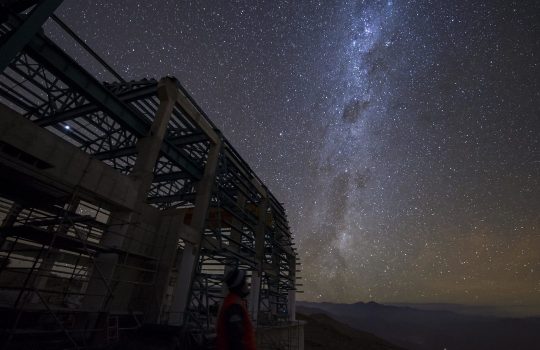Leftover Big Bang light helps calculate how massive faraway galaxies are
- cosmic microwave background
- cosmology
- dark energy
- Dark Energy Camera
- dark matter
- gravitational lensing
- South Pole Telescope
- University of Chicago
From UChicago News, Feb. 6, 2020: Fermilab and University of Chicago scientist Brad Benson and colleagues use a different method to calculate the masses of distant galaxies: the polarization, or orientation, of the light left over from the moments after the Big Bang. In doing so, they demonstrate how to “weigh” galaxy clusters using light from the earliest moments of the universe — a new method that could help shed light on dark matter, dark energy and other mysteries of the cosmos.


